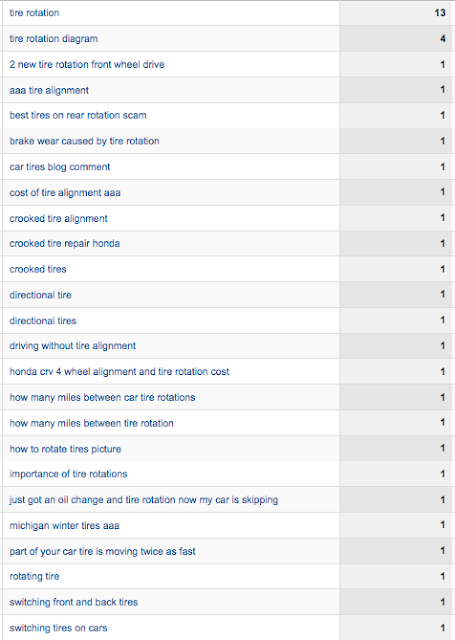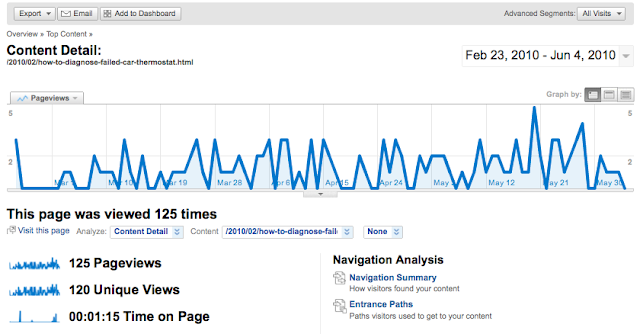The part of this process that shocked me the most was the huge number of applications I received that completely missed their mark. Some applications semi-failed, and only a tiny handful of applications succeeded in holding my interest and landing an interview.
As I think about the successes and failures of the applications I waded through, it occurs to me that there are some important marketing messages to be gleaned. Five messages, to be exact.
1) Pay attention to what the customer is asking for.
Applications that addressed each item in the want ad instantly rose to the top. Sure, it was convenient to have resume, portfolio and experience all at the tips of my fingers rather than having to call or email to get them, but the main reason why these applications impressed me is that I felt that the applicants had been attentive to my requests. In other words, they listened.
Customers aren't going to be as explicit about what they want from a product or service provider as an employer posting a want ad, but the concept of listening applies to both. Truly, genuinely listening to your customer base is the first step towards effective marketing, and tuning in is getting easier. Use Google Alerts, have Twitfeeds dedicated to your industry's most relevant hashtags, run customer surveys and ask your customers for exit interviews. It's amazing to me how often businesses ignore feedback they receive directly from customers. Knowing what customers want and expect from you isn't that hard, if you make listening a priority.
2) Present your message meticulously.
Applications with misspellings, sentence fragments and just plain awkward wording immediately got stuffed to the bottom of the pile. Sure, I'm not hiring a programmer for his or her writing skills, but if you aren't detail-oriented enough to proofread your cover letter, you're probably not the hire I'm looking for.
Every print ad, banner ad, landing page and social network profile is a resume for your business. If you haven't taken the time to make your message clear and engaging, why should your customers listen to what you have to say? You would think that marketers and businesses would make it a priority to make these messages pristine and user-friendly, but it's often not the case. The internet is littered with shoddy landing pages, websites lacking clear calls to action and just plain obnoxious Facebook updates. Take an honest look at your website from a customer's point of view. Is it appealing? More importantly, is it clear, concise and easy to navigate? Does it have all the information it needs to have to get leads to convert? Does it have an appealing call to action? Think about it from an employer's point of view. If this ad were a resume, would you get hired?
3) Clean up your online image.
My most...shall we say interesting applicant was one that showed real promise; the cover letter language was a little rough, but it was engaging and the applicant's portfolio looked great. Then an interesting thing happened. As we corresponded through email, Gmail automatically added the applicant to my Gchat and Google Buzz. The applicant had placed a link in the status update which showed in Gchat, so I clicked on it and was directed to a social networking page dedicated to the growing and selling of illegal botanicals. Marijuana prohibition debate aside, this isn't exactly the kind of image you want to portray to a potential employer. No thank you.
Businesses that don't google themselves frequently or make any effort to clean up after negative reviews open themselves up to a similar situation. Has your business gotten bad press in the past? Hide that dirty laundry by replacing bad press with good press. Do a charity and syndicate an online press release about it. Make your business available in vertical directories, then ask customers to post reviews. If negative feedback is posted in a public arena, go there and respond directly, doing your best to make amends. Demonstrating that you're listening and that you care, even if you're responding to a bad review, is great for your business' image.
Being careful how you and/or your employees connect their business identities with their personal identities online is becoming another big factor in business identity. If this is a concern, have a meeting discussing Facebook privacy settings, personal Twitter policies and what content is appropriate to post on business networks like LinkedIn.
If you need help creating content or managing your online identity, keep in mind I offer social media consulting and creative copywriting services.
4) Be clear about what you have to offer.
I loved getting cover letters or email responses which specifically mentioned what the applicant was NOT capable of. Rather than having to cajole this information out of the applicant or waste time pursuing an unqualified candidate, these rare applicants were upfront about what they could and couldn't do for my client and me. Honesty is important in an employee or contractor, and even if the applicant's skill set wasn't a good match for this project, their application will be kept in mind for future opportunities.
While I don't think very many retailers or service providers intentionally mislead their customer base, many have a tendency to be unclear about exactly what it is they can do for the customer. Highlighting only the positives of a product without mentioning any of its limitations can irritate customers and cause them to put your business on their "never purchase from" list. If I download a piece of software that turns out to be Mac incompatible but wasn't labeled as such, I'm probably going to shun this company in the future for wasting my time and hard drive space. Be clear about what you can and can't do for your customers. They'll thank you for it.
5) Stand out from the crowd.
My two favorite applicants were both very different; one was extremely brief and the other quite long and detailed, but both of them were unique. The short application read like a checklist of everything I'd asked for in the ad, and it was concluded by tasty phrasing like "if my skills look like a good match for your needs, I'd love to talk more with you...". We all love to have our needs considered!
The longer application took longer to check off my list of requirements, but it was full of genuine exuberance. It oozed energy, confidence and interest in new work.
I think marketers and business owners can learn a lot from both of these very different models. A message that's extremely short but to the point can be refreshing for customers who are used to being bombarded with irrelevant information, and it's a message that stands out above the long-winded masses. On the other hand, using a genuine tone and expressing excitement about a product, service or your customers can be a great way to engage customers emotionally. The common element in both types of messages is being genuine.













